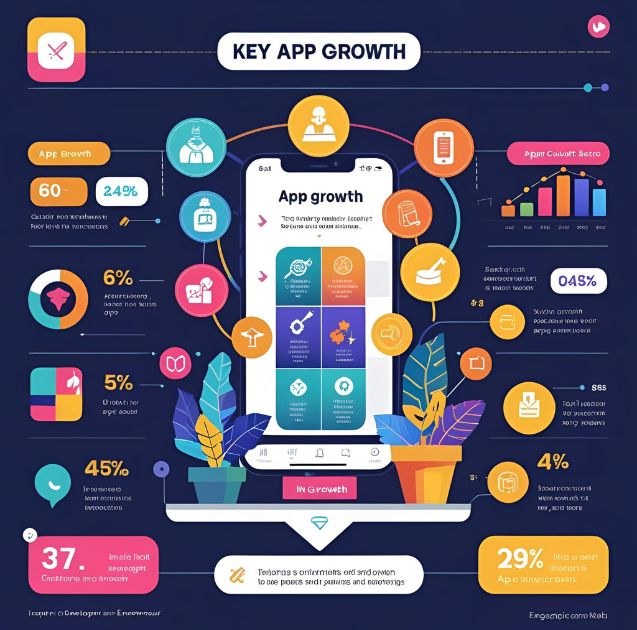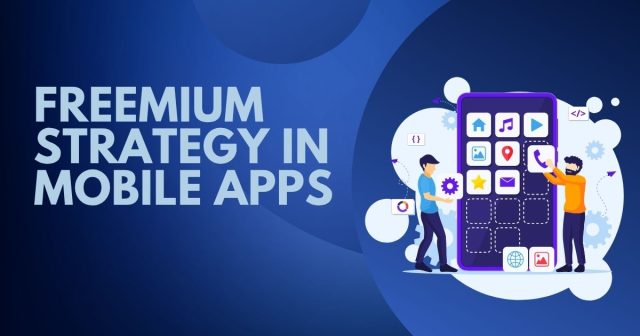The mobile app market may be booming, but developers have never found it so difficult to acquire and retain users. For many businesses, the answer is a freemium strategy. This business model provides the essential features of an app for free, and holds out premium features as an incentive to those who pay. But the true power of this method is in the collateral benefits it brings along.
This blog takes a deep dive into how the freemium model works in mobile apps and uncovers some remarkable (yet easily overlooked) spillover effects that can boost your enterprise and make it thrive. You’ll see how these tactics can increase your user base, stimulate word-of-mouth promotion, and generate customer commitment over the long haul. For that matter, let’s lay out precisely why “free“ could well be your strongest growth accelerator.
What Is A Freemium Strategy in Mobile Apps?

At its core, a freemium strategy is simple. Mobile apps adopting a freemium model allow users to download and use the app for free, offering essential features front and center. The entry barrier is zero which lures millions of users in. The way to make money comes from presenting users with premium upgrades, such as exclusive features, no advertisements, or better services.
Two popular examples of freemium apps include Spotify, which streams free music for its users to listen to in exchange for watching commercials only charging if they want ad-free music that can be downloaded and used offline without ads; and Duolingo, offering courses that are free for language beginners but will need a subscription for advanced methods of learning and no more advertising. Learn more about Mobile Marketing.
However, the real hidden advantage of freemium lies not just in turning free users into paying ones. It lies in the spillover effects created by the freemium model.
Why Spillover Effects Matter
The freemium model has made a huge impact on the way consumers receive and use apps. Freemium is a combination of free and premium that offers users complimentary basic services but charges them for advanced, special features. With this new format, app-makers are no longer reliant on big upfront cash prizes. Their income comes from micropayments, so they can attract customers by providing free content and later make money by selling extras.
The registration process for most free trials is far simpler than that of typical products and services. In general, it only involves filling in your email address to try something out- not a credit card number or shipping address. This makes it easy and quick to experience an app firsthand.
The word “freemium“ was coined to describe products and services whose basic model is free, but also indirectly generates revenue. Spillover effects occur when the impact of one group (say freemium users) positively influences another group (paying users or the app’s overall growth). No matter how small those effects are or what form they take, sometimes they decide whether your mobile app succeeds or fails. That’s why they matter.
The Benefits of the Freemium Model in Mobile App
Spreading User Acquisition on a Large Scale
The freemium model drags down the bar so low and appeals to the mass audience at the same time.
People are much more likely to give your app a try at no cost. Once you have attracted their attention, it is up to your app’s value proposition to make them stick and pay.
For example, TikTok began as a freemium app and leaned heavily on this approach in order to attract millions of users around the world. Now that TikTok has morphed into ad-funded instead of user-funded business models, the initial presence of strong traction in its user base was crucial for quick entry and rapid growth.
How to Generate Huge Quantities of Data
Freemium apps generate comprehensive user data, which creates valuable insights into user behavior, preferences and app usage trends. This data can be used to support data-backed decisions about the future development of an app, better premium feature design, and targeting campaign strategies for marketing.
One example is Duolingo, which offers a free version however, it is analyzed to find where the pain points in learning are and where users not only want, but are liable to upgrade for assistance.
Creating Viral Growth Loops
People who enjoy the free version of a Game / App are more likely to tell other people about it, so makes for an unbroken growth cycle. Features like referral bonuses or social sharing options enhance this virality effect.
A good example of this is how Dropbox grew its user base early on by giving users who referred others extra storage. All this created a virtuous circle, which saw Dropbox closing in on 500 million users within 3 years.
Leverage Spillover Effects to Maximize Success of Freemium
Provide Real Value Boosting for The Free Version
The free version is often the user’s first impression of your app. If it doesn’t amaze them, you are unlikely to see any upgrades. Make sure that the free tier includes enough functionality and has an experience similar in quality to paid features so people stay engaged.
It adds a real premium feature value to the free version of the app if you offer users one or two limited-time INAL threePapa trials.
To cite a few examples:
Example: For free users, Canva makes available powerful design tools. But paid subscribers get exclusive features like brand kits and premium templates.
Keep Community Involvement High
Creative marketing can help you come up with ideas: sharing features on social media, inviting your friends to participate in something together or creating something that other people will want to share.
Pro Tip: Think about keeping it ‘gamified’. (Apps like Headspace and MyFitnessPal use progress tracking and achievements to give users conversation points they can share with friends.)
Find Complementary And Partners
Work and work with advertisers and sponsors who best serve your target audience, place-related partners. Spillover effects enable apps to make extra income from ads aimed at free users, funding further marketing efforts and additional apps.
The Good Old Days of Loyalty
Freemium models are most successful in attracting people who leave after a time, so how do you ‘keep’ your users? Try push notifications, personal emails, rewards programmed. These encourage people to interact with your app and remind them what good it is.
Measuring the Success of Your Freemium Model
So how do you know if your freemium model works once implemented? Here are a few KPIs to track:
- Free to Premium Conversion Rate: Find out how many free users convert into paying customers.
- Daily / Monthly Active Users (DAU/MAU): Monitor user participation to understand retention.
- Customer Acquisition Cost (CAC): Calculate what it costs to bring in a customer who will buy.
- Lifetime Value (LTV): See how much money your users make for you over the course of their user period.
- Churn Rate: Keep an eye on both free and paid user churn rates to pinpoint potential barriers that are driving customers out the door.
Key Points for App Growth

It’s not just for the sake of gaining users that freemium strategies offer “free stuff.” They actually get psychological triggers, have a range beyond your immediate reach, and are able to create huge extra value via spillover. From driving new user acquisitions to generating valuable data and building loyal communities, the freemium model has become a go-to strategy for mobile applications.
If you are looking to implement a freemium model, now is the time. But it’s not enough to simply offer free content. You need to research your audience, make strategic offerings, and constantly refine the way that you interact with them.




